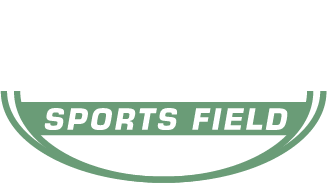Frequently asked
Questions.
Absolutely! We offer custom logos, end-zone lettering, and a variety of turf color options to match your brand or team colors.
Yes, we provide ongoing maintenance plans, including grooming, infill replenishment, and repairs to maximize the field’s lifespan.
We offer organic infill options that utilize moisture in the air to keep surface temperatures cooler and within 10 degrees of natural grass. We utilize the natural occurrence of evapotranspiration, which causes moisture to remain inches above the surface, lowering temperatures.
GMAX testing involves dropping a weighted missile (ASTM F355 test device) onto the field surface and measuring the acceleration of the impact. The results are expressed as a GMAX score—a higher value means the field is harder, while a lower value means it has better shock absorption. The challenge with turf is providing a stable surface without causing the surface to harden. GameKeeper has perfected this technology.
With proper maintenance, a high-quality synthetic turf field can last 8–12 years before needing replacement.
Yes, it reduces water usage, eliminates pesticides/fertilizers, and is 100% recyclable and uses organic products for infill.
Our turf systems meet and exceed industry safety standards without sacrificing performance, durability, surface stability and consistency. We use a state of the art shock and drainage to further reduce impact injuries. Our GMAX scores remain below 100 for the life of the field and we use the best products in the industry allowing for the best possible playing surface and no negative health effects.
Synthetic turf offers lower maintenance costs, higher durability, all-weather usability, and increased field availability. Natural grass like play with durability 24/7 usage.
Ideal GMAX Range: 80-125 (safe zone) but with allowance up to 165 which can cause severe concussion and injury with impact. GameKeeper Turf is built to stay within and below the safe zone.
GMAX is a measurement of the shock-absorbing properties of a sports surface, indicating how well a field absorbs impact forces when an athlete falls or makes contact with the ground. It is a crucial safety metric for synthetic turf and natural grass fields to reduce injury risks, particularly for head impacts.
